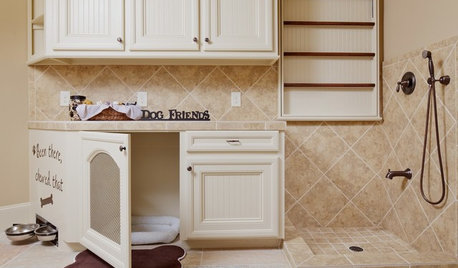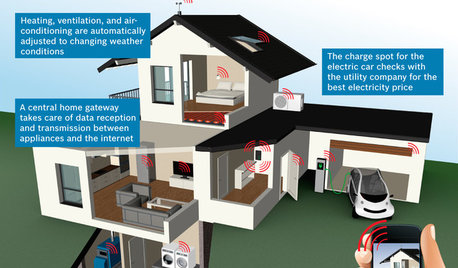Has Puron proved itself reliable?
kailor
17 years ago
Related Stories

SMALL KITCHENSPersonal Spaces: Small-Kitchen Designs
In these kitchens, homeowners have found inventive ways to make the most of tight quarters
Full Story
MOST POPULARWhy We Love Midcentury Modern Design
There's a method to all this 'Mad Men'-ness — just look to psychology, tough times and, believe it or not, Apple
Full Story
GREEN BUILDINGHouzz Tour: See a Concrete House With a $0 Energy Bill
Passive House principles and universal design elements result in a home that’ll work efficiently for the long haul
Full Story
PETSThe Crate Conundrum: A Safe Place for Your Pooch
Get ideas for a comfy den for your dog that works well with your space too
Full Story
HOME TECHThe Future of Home Automation: Cheap, Wearable and Mobile!
Look for smart watches and glasses that can control your smart-phone apps, which in turn automate your home equipment
Full Story
KITCHEN DESIGNA Cook’s 6 Tips for Buying Kitchen Appliances
An avid home chef answers tricky questions about choosing the right oven, stovetop, vent hood and more
Full Story
GREEN BUILDINGWhy You Might Want to Build a House of Straw
Straw bales are cheap, easy to find and DIY-friendly. Get the basics on building with this renewable, ecofriendly material
Full Story
MOST POPULARMy Houzz: Open-Air Living in the Mountains of Bali
Community, jaw-dropping beauty and sustainability come together in a tropical paradise for a London expat
Full Story
CONTRACTOR TIPS10 Things to Discuss With Your Contractor Before Work Starts
Have a meeting a week before hammers and shovels fly to make sure everyone’s on the same page
Full Story
THE HARDWORKING HOMECES 2015: Inching Toward a Smarter Home
Companies are betting big on connected devices in 2015. Here’s a look at what’s to come
Full StoryMore Discussions







blacknumber1
bob_brown
Related Professionals
Lockhart Solar Energy Systems · Green Valley Solar Energy Systems · Imperial Beach Solar Energy Systems · Riverside Solar Energy Systems · Nutley Solar Energy Systems · New Lenox Solar Energy Systems · Chattanooga Home Automation & Home Media · Danville Home Automation & Home Media · Phoenix Home Automation & Home Media · Plainview Home Automation & Home Media · Severn Home Automation & Home Media · Wellesley Electricians · Germantown Fireplaces · Palos Hills Fireplaces · Simi Valley Fireplacesklabaach
blacknumber1
baymee
bama_dude
mr_havac
aemeeich_
bob_brown
pyropaul
baymee
dallasbill
bob_brown
pyropaul
bob_brown
blacknumber1
pyropaul
blacknumber1
davefr
dallasbill
hkky
aemeeich_
bob_brown
guyinacoldhouse
bob_brown
woodinvirginia
predfern